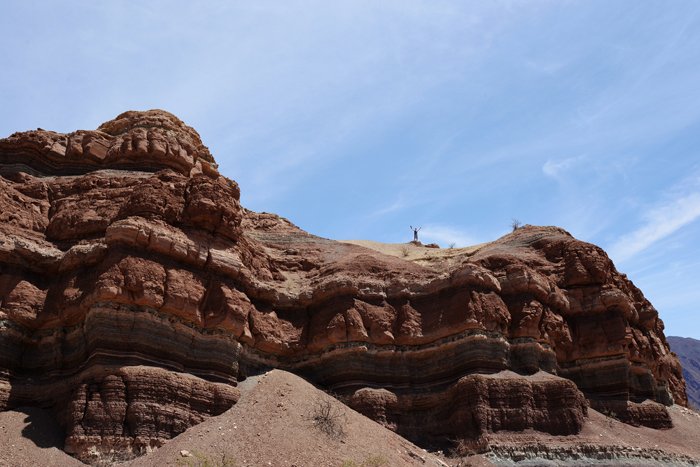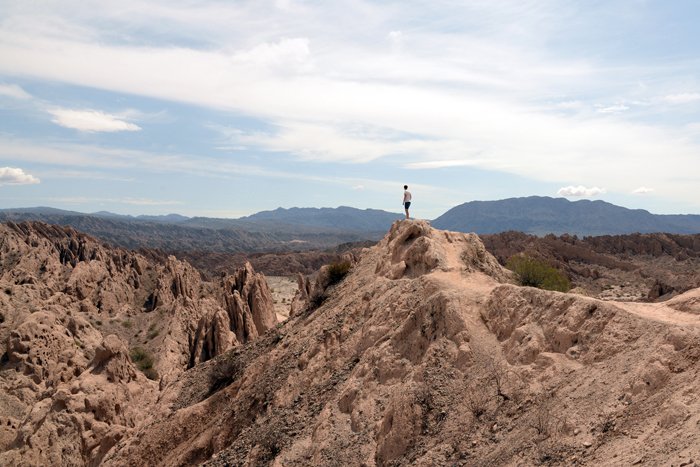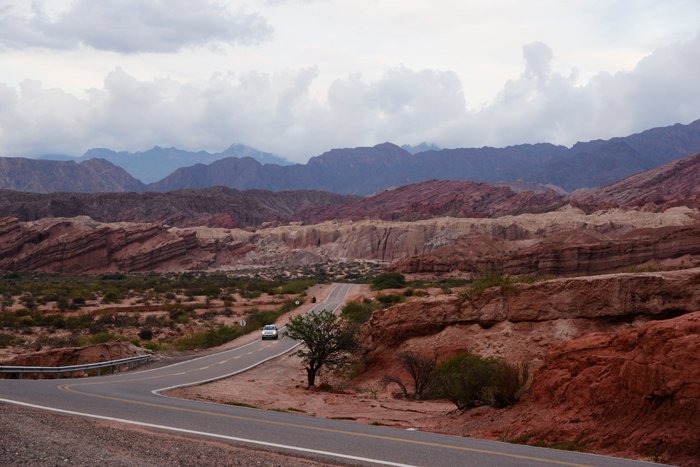
The real attraction in the province of Salta is the spectacular and dramatic landscape. For thousand of years wind and water has carved and eroded the rocks into different shapes. The result is a visual feast for the eyes. Some of Argentinas most impressive rock formation and stunning scenery is found in Quebrada de Cafayate and Valle de Calchaquies. Salta, he capital of the province, has well preserved colonial architecture, great food, lots of history and charm. Still, the scenery might be what draws most visitors to town. To appriciate the landscape we did a three day roadtrip to Cafayate and Cachi.
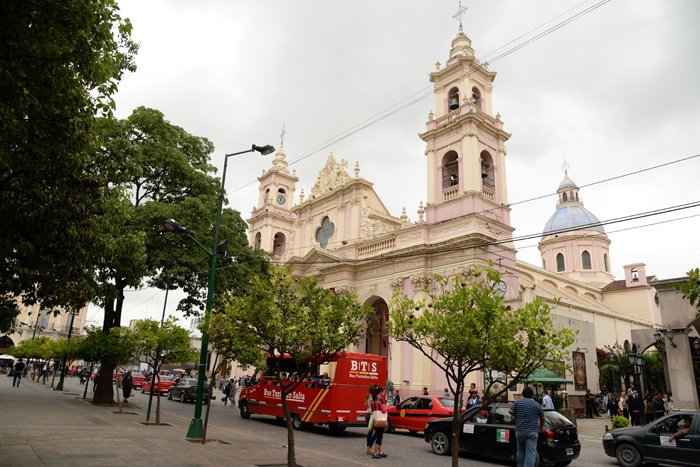

Besides visiting the beautiful cathedral and eating the best steak ever, I chose to visit the museum Museo de Arqueologia de Alta Montana. This museum is focusing on Inca culture and has on display the mummified body of one of three children discovered on the peak of Llullaillaca, a 6739 m volcano on the Chilean border. The museum was created in 2003 to present this discovery of the «Llullaillaca children»-one of the most important archeological discoveries in Argentina. In 1999 three naturally mummified Inca children were found on an expedition made up of mountaineers and scientists. It is presumed that the children were sacrificed to Inca gods. Supposedly they were left to die of cold and lack of oxygen. After they were found they were transported to Salta. Some see this as a controversial act and many are of the opinion that the children should have stayed were they were found. This visit made a deep impression.

Quebrada de Cafayate
The first day on the road. Driving from Salta along the paved road to Cafayate. After a while, the landscape changes from lush, green fields to become more dramatic. Rock formations and colored sandstone changed the look of that last stretch before Cafayate. This rocky terrain presents a stunning array of tones from green to different shades of red. The road follows the canyon carved by the river Rio de las Conchas. The many distinctive landformes are named and signposted by the road, making them easy to find. It is supposed to take about three hours to drive this distance, but it took us the whole day, due to all our stops to enjoy the scenery and do some short hikes.
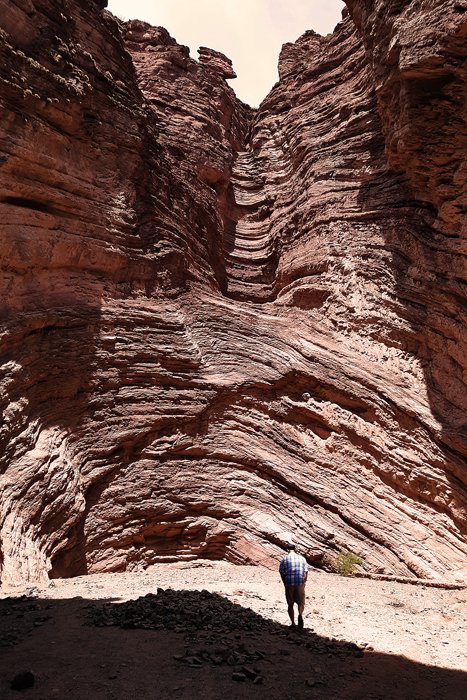
«El Amfiteatro», a natural amphitheatre, carved from red stone and surrounded by walls 20 m. high. It is an amazing feeling to stand in the middle and to look straight up at the blue sky. The acustic has a quality that will make any concert hall envious! Some tourists even tried their own voices to check it out!

The viewpoint "Mirador Tres Cruces" with gorgeous views of the valley
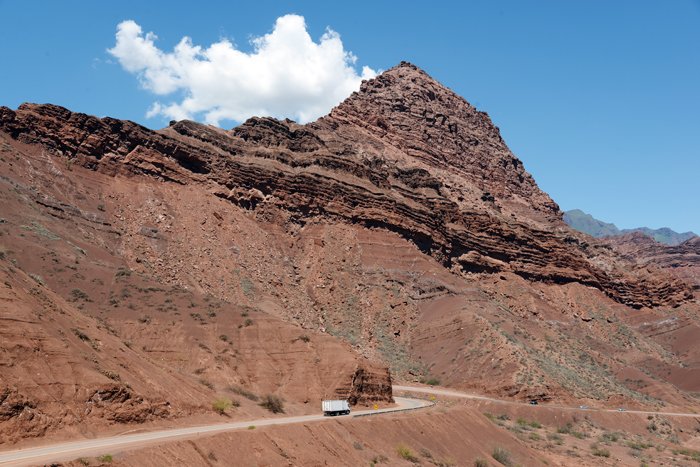
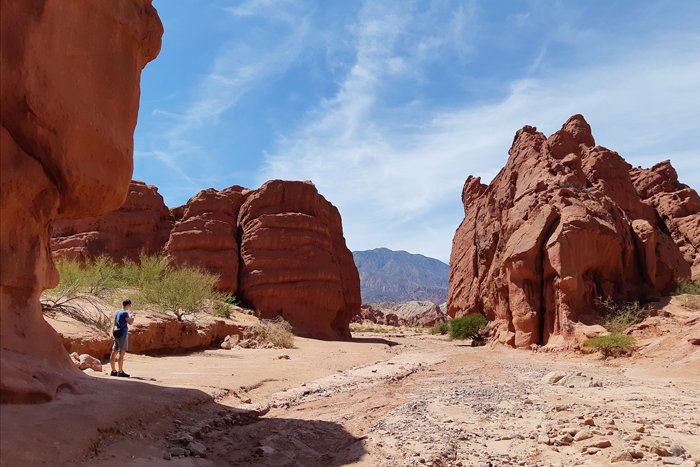
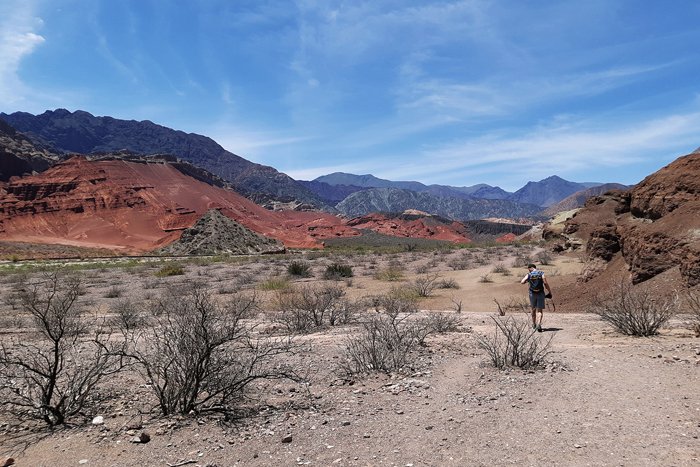
Hiking along the dry riverbank
Cafayate is the second center for quality wine production. It is a tranquil and relaxed small town, surrounded by vineyards. What I learned is that this area is famous for its torrontès grape which gives aromatic white wines. It is a lovely place to stay an extra day. We did that to be able to do longer hikes in the canyon in the morning and winetastings in the afternoon.
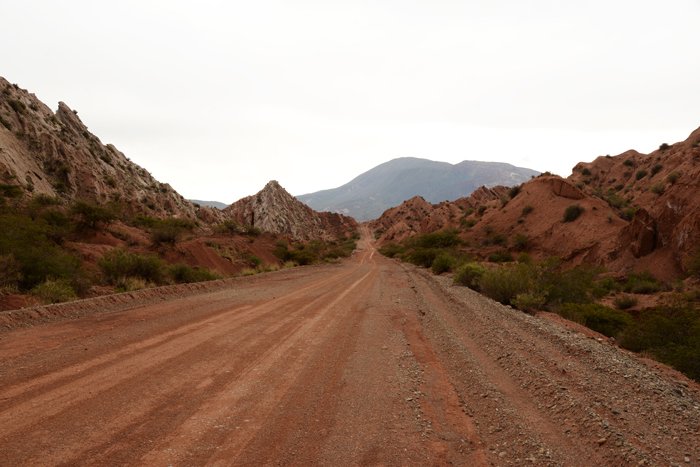
Valle de Calchaquies
On our third day the scene changed from wineyards to extraordinary rocky landscape. We drove 160 kilometers on the legendary Route 40 from Cafayate to Cachi. Unpaved allmost all the way. This route is famous, offering a scenic drive. In addition to the natural beauty, the area is rich in history. Route 40 was one of the main roads used by the Incas in the pre-columbian time.
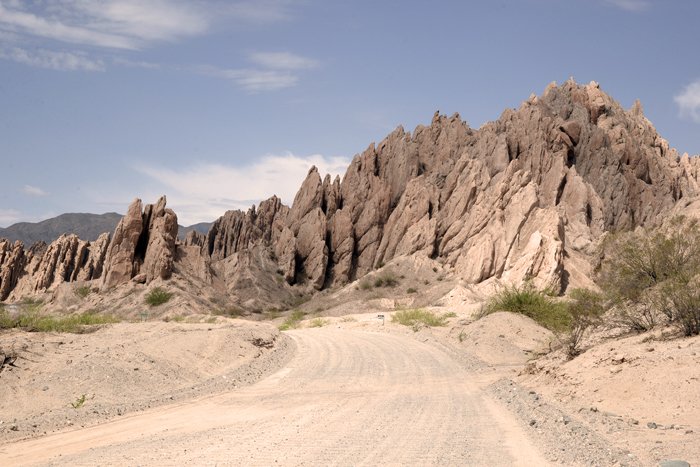
Climbing some peaks at Monumento Natural Angaco
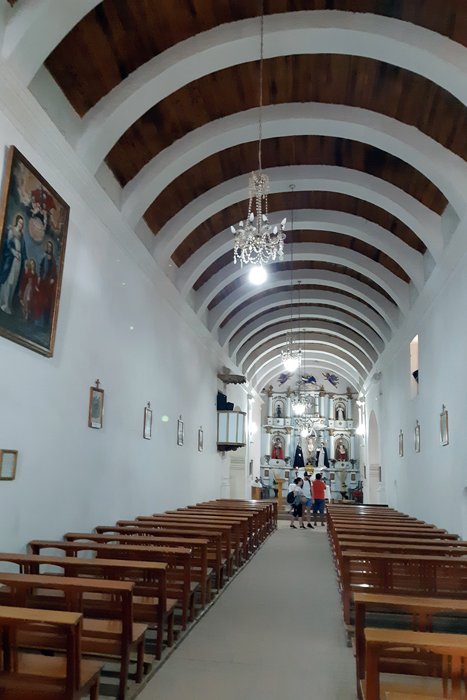
Cachi is a pitoresque village 2280m. above sea level and overshadowed by snowcapped Nevado del Cachi (6380m). Until 1500 AD, the Inca empire reached as far as Cachi and used this place as an adminestrative center. The church has a ceiling built of wood from cactus, which is growing plentiful here.
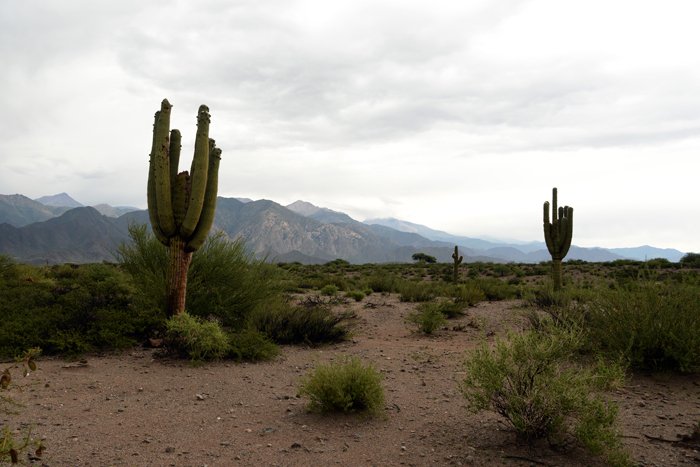
Parque nacionales los Cardones
We continued through the national park to get back to Salta. This park coveres a large area of hills and ravines at height levels between 2.700m and 5000 m. The first hour was a drive through giant cactus groves. This is a gorgeous high-desert territory with snowcapped mountains in the background. The most dramatic part is perhaps the Cuesta del Obispo where the descent starts. The road is zigzagging 3000 m. downhill to the point where it meets the road back to Salta.
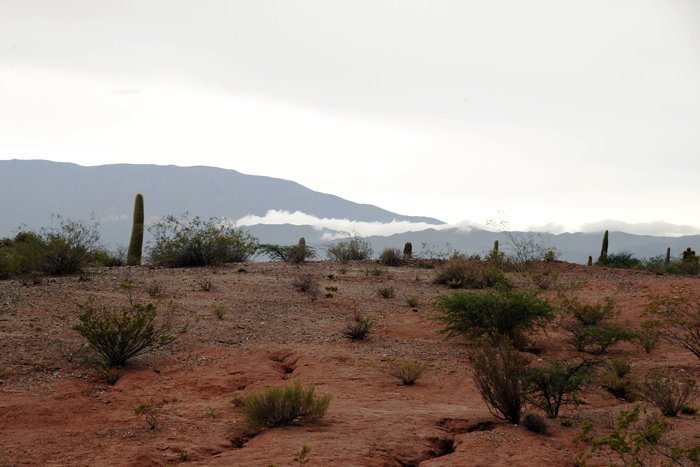
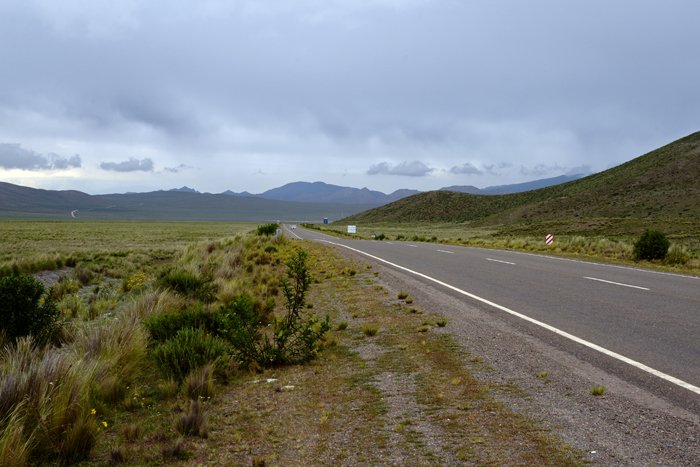
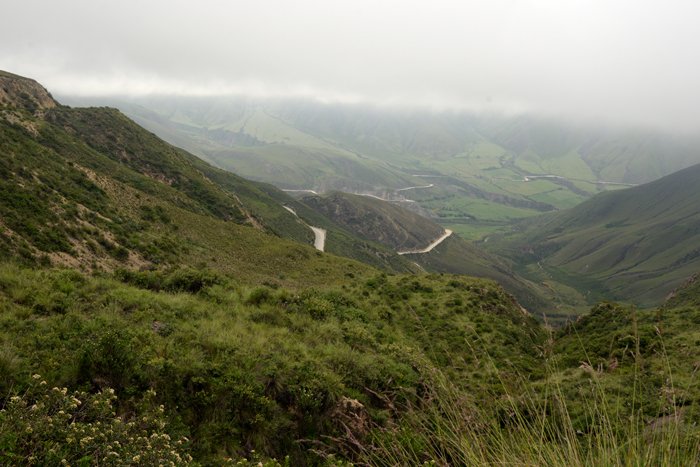
It certainly has been one of the most spectacular roadtrips I have ever done. The scenery is varied. It is hard to decide what has made the biggest impression. Each place with its history, people and scenery has a magic of its own. Even daytours can be arranged from Salta, having your own car is really the best option.
Please do follow if you want to keep up with my next travel story. Any upvotes or resteems are hugely appreciated!
Latest travel stories, check out :
ARGENTINA #8 – A desert of salt
ARGENTINA #7 - A journey to "The End of the World"
CHILE #6 - The city of street art
CHILE #5 - On a hot date with Mother Earth
CHILE #4 - Into the mysteries of Easter Island
ARGENTINA #3 - Patagonias colossal field of ice and snow
ARGENTINA #2 - highligst of Patagonia: Mt. Fitz Roy
ARGENTINA #1 - walking through the «City of the Dead» in Buenos Aires
U.J
Kristiansand, Norway
All the photoes are mine, Ulla Jensen (flickr, Instagram and facebook)
[//]:# (!steemitworldmap -24.781855 lat -65.418077 long ARGENTINA #9 – When wind and water shapes the landscape d3scr)
